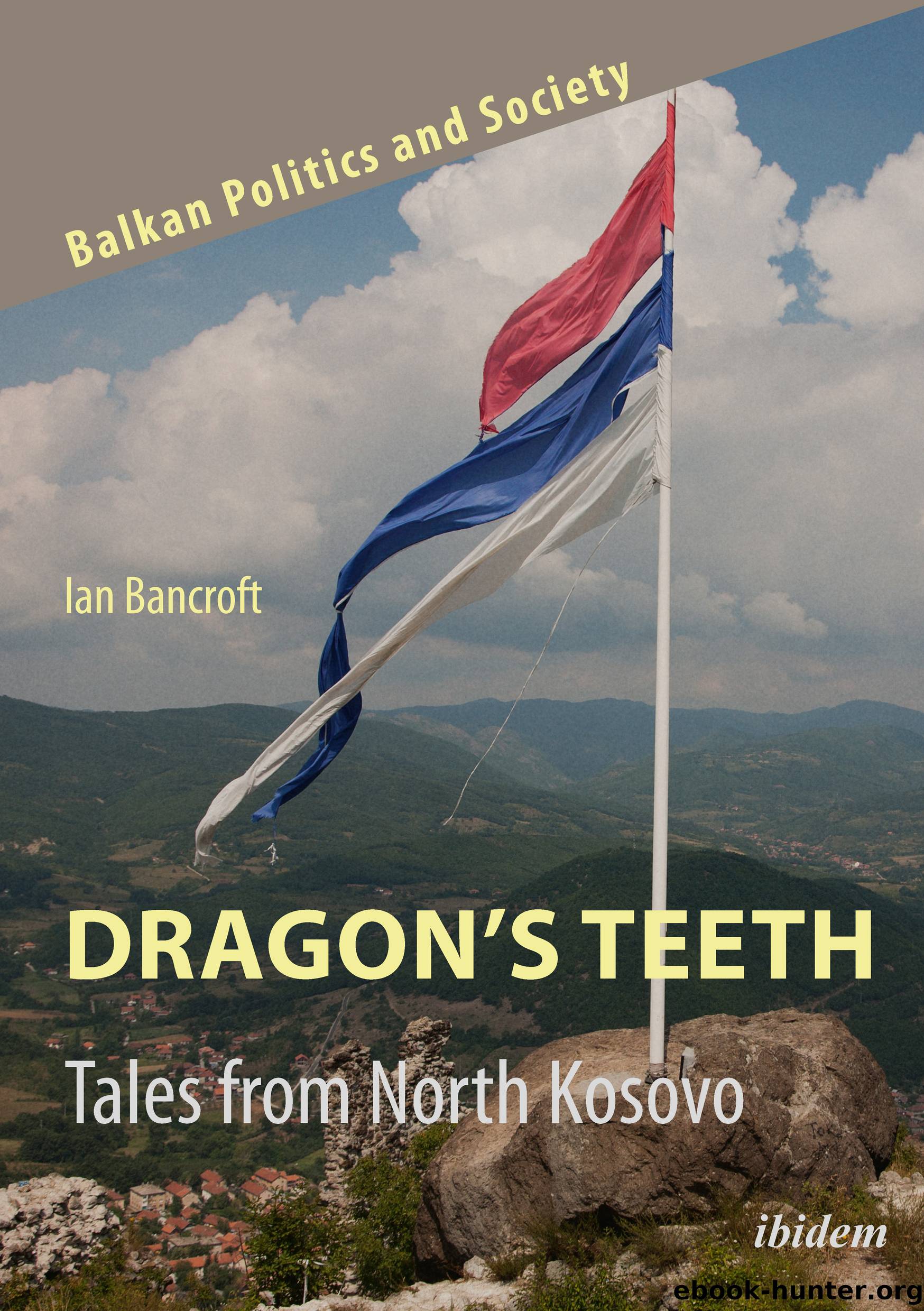Dragon's Teeth by Ian Bancroft

Author:Ian Bancroft [Ian, Bancroft,]
Language: eng
Format: epub
Publisher: Ibidem Press
Published: 2020-10-18T16:00:00+00:00
ERZEUGT DURCH JUTOH - BITTE REGISTRIEREN SIE SICH, UM DIESE ZEILE ZU ENTFERNEN
8) Bridging the Wall
‘Stop, Stop, Ibar water; where are you rushing like that?; I also have my sorrows; and it is not easy for me’. So flows the first verse of ‘Stani, stani Ibar vodo’ (‘Stop, stop, Ibar water’), inspired by the river Ibar that runs through Mitrovica. It was composed by the Serbian folk songwriter, Dragiša Nedović, the little known composer of many a famous number. It continues, ‘There where Ibar water; in Morava streams; one lonely house; hides my darling’. The waters of the Ibar are the ‘rushing’ flows of life, the ‘lonely house’ the death of his darling, the stopping of the waters the death he seeks in order to be reunited with her.
It is this hope of reunion that places an often intolerable strain on bridges between supposed adversaries; a symbolic weight that threatens to dislodge the very keystone itself. The re-opening of Mostar’s Ottoman-era ‘Stari Most’ (‘Old Bridge’)—destroyed in November 1993, its makeshift car tire defences finally pierced by Croatian shelling—was supposed to reunify the city’s East and West banks, predominantly populated by Bosniaks and Croats, respectively. Yet its restored magnificence—through the retrieval of sunken original stone and painstaking handiwork by some of the few surviving masters of the craft—only masks Mostar’s troubled past, present, and future. Nonetheless, the bridge as metaphor infects many a speech, exalting the transformative effect physical connections can have on divided communities.
Mitrovica’s Main Bridge is similarly burdened by reconciliatory expectation since the cessation of hostilities; becoming both a symbol of the town’s division and its most popular tourist attraction. Tasked with its revitalisation in 2001, French engineers and an equal number of local Serb and Albanian workers—whose names are etched into a plaque erected at the bridge’s central point: Murat, Milan, Pierre, Jean, Bertrand, Marko, and Ismet, to list but a few—inverted Paris’s own Austerlitz Bridge; placing the arches on instead of beneath the bridge, before turning them outwards up- and down-stream to resemble a roller-coaster. A neon blue strip of light is emitted from within the arches, leading some to dub it the ‘Blue Bridge’.
The Bridge (sometimes referred to as the ‘New Bridge’) has since been a site of contention, though its history has been far from linear. It has found itself barricaded at intermittent junctures and in various ways; dragon’s teeth inspired fortifications improvised out of whatever they could lay their hands on. Only some four years on from war, vehicles and pedestrians crossed freely in both directions. A sense of normalcy returned, as epitomised by early evening promenades on the north Mitrovica corso. Yet when I first visited in 2006, piles of gravel, a tangle of barbed wire, and French Gendarmes—many feasting regularly at ‘Chez Pascal’, a nearby restaurant, serving stodgy onion soup and crème brûlée made with vanilla essence—blocked the way, a legacy of the retrograde March 2004 riots across Kosovo. The French codenames for roads—‘Balzac’, ‘Zola’, ‘Flaubert’, and ‘Rimbaud’—contrasted sharply with those of their American counterparts (‘Bull’, ‘Hen’, and ‘Chicken’).
Download
This site does not store any files on its server. We only index and link to content provided by other sites. Please contact the content providers to delete copyright contents if any and email us, we'll remove relevant links or contents immediately.
| Arms Control | Diplomacy |
| Security | Trades & Tariffs |
| Treaties | African |
| Asian | Australian & Oceanian |
| Canadian | Caribbean & Latin American |
| European | Middle Eastern |
| Russian & Former Soviet Union |
The Secret History by Donna Tartt(16622)
The Social Justice Warrior Handbook by Lisa De Pasquale(11489)
Thirteen Reasons Why by Jay Asher(7788)
This Is How You Lose Her by Junot Diaz(5770)
Weapons of Math Destruction by Cathy O'Neil(5036)
Zero to One by Peter Thiel(4824)
The Myth of the Strong Leader by Archie Brown(4789)
Promise Me, Dad by Joe Biden(4447)
Beartown by Fredrik Backman(4415)
Stone's Rules by Roger Stone(4415)
How Democracies Die by Steven Levitsky & Daniel Ziblatt(4398)
The Fire Next Time by James Baldwin(4342)
100 Deadly Skills by Clint Emerson(4076)
A Higher Loyalty: Truth, Lies, and Leadership by James Comey(4032)
Rise and Kill First by Ronen Bergman(4012)
The David Icke Guide to the Global Conspiracy (and how to end it) by David Icke(3881)
The Farm by Tom Rob Smith(3872)
Secrecy World by Jake Bernstein(3782)
The Doomsday Machine by Daniel Ellsberg(3730)
